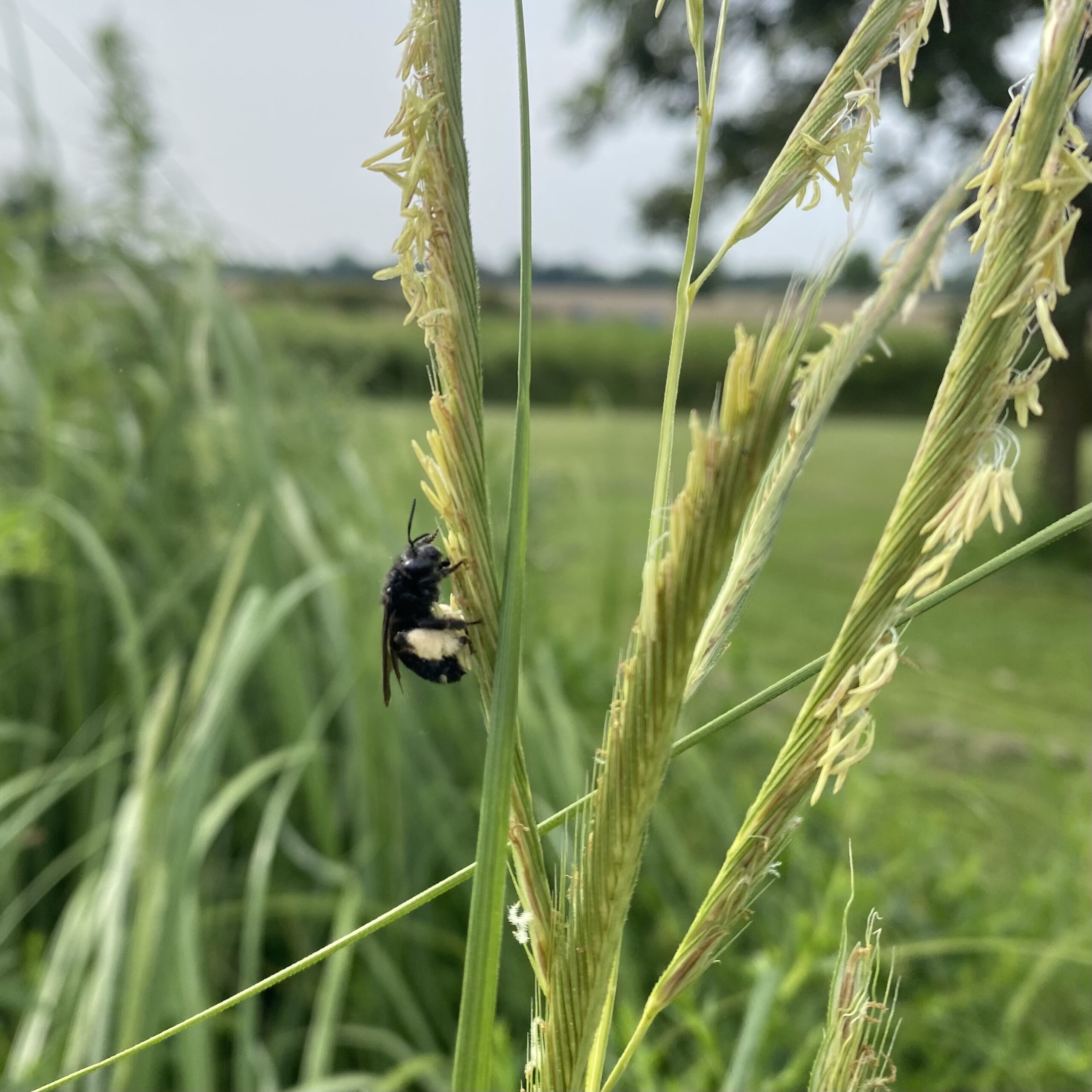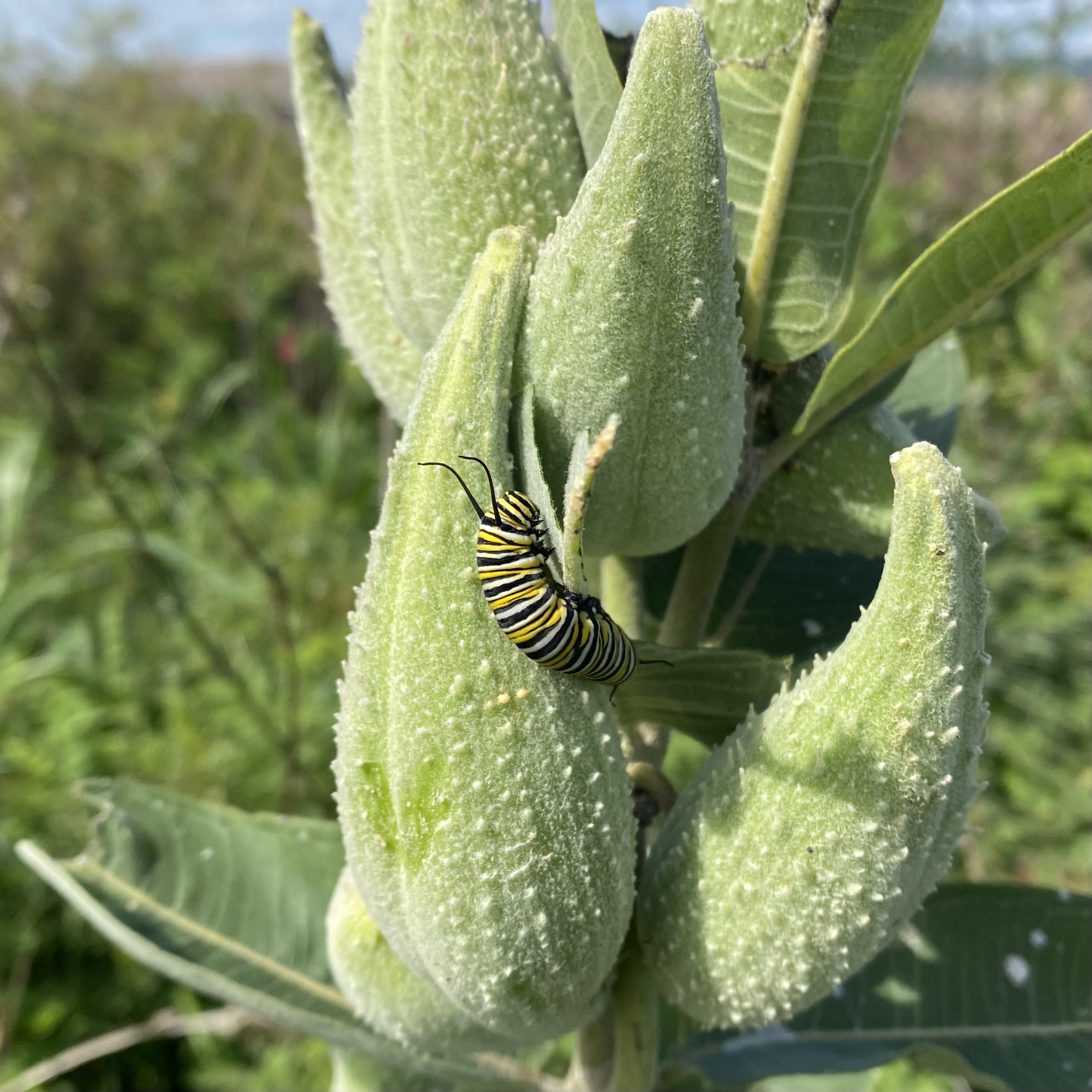Summer is transitioning into fall, and likewise, the prairie is in change as well. The flowering stalks of Compass Plants (Silphium Laciniatum) now limp low, fading into a haze of purple & yellow from Big Bluestem (Andropogon gerardi) and budding Goldenrods (Solidago spp.).
These autumnal blooms are an important food source for native pollinators as they prepare their nests or migrate for the incoming winter. Even the pollen from grasses may be foraged during times of dearth, offering valuable protein to numerous beneficial insect species.

The field season, however, is still in full swing at Midewin National Tallgrass Prairie: Seed collection is ramping up as an entire summers-worth of seed nears harvest; and rare plant monitoring is still ongoing, including American Ginseng (Panax quinquefolius) and Goldenseal (Hydrastis canadensis) in the local woodlands.
It’s also the perfect time for spotting the bright red seed capsules of Hispid False Mallow (Malvastrum hispidum) with Plants of Concern, and the showy purple blooms of the Leafy Prairie Clover (Dalea foliosa) at Des Plaines State Fish & Wildlife Area.

Botany workshops have also been underway, offering opportunities to learn the graminoids and fully-aquatic plants of Midewin. During one lesson, two seemingly-different species of rush were placed at our table. Yet despite their wildly distinct inflorescences, both were actually an example of Torrey’s Rush (Juncus torreyi).
One specimen, however, was inhabited by a gall-making psyllid, or “plant lice.” After laying its eggs, plant growth hormones are stimulated and a gall is formed, offering both food & protection to the developing nymphs hidden within.

Although Milkweed (Asclepias spp.) seed is not yet ready to collect — as indicated by its swelling green seed pods — we keep ourselves entertained by watching the equally-swelling Monarch caterpillars chow hungrily at the plants’ leaves.
Soon these caterpillars will molt one last time to form a chrysalis, digesting and re-assembling itself until finally emerging as a butterfly — a transformation fit for the season of change.

Dade Bradley
Midewin National Tallgrass Prairie
